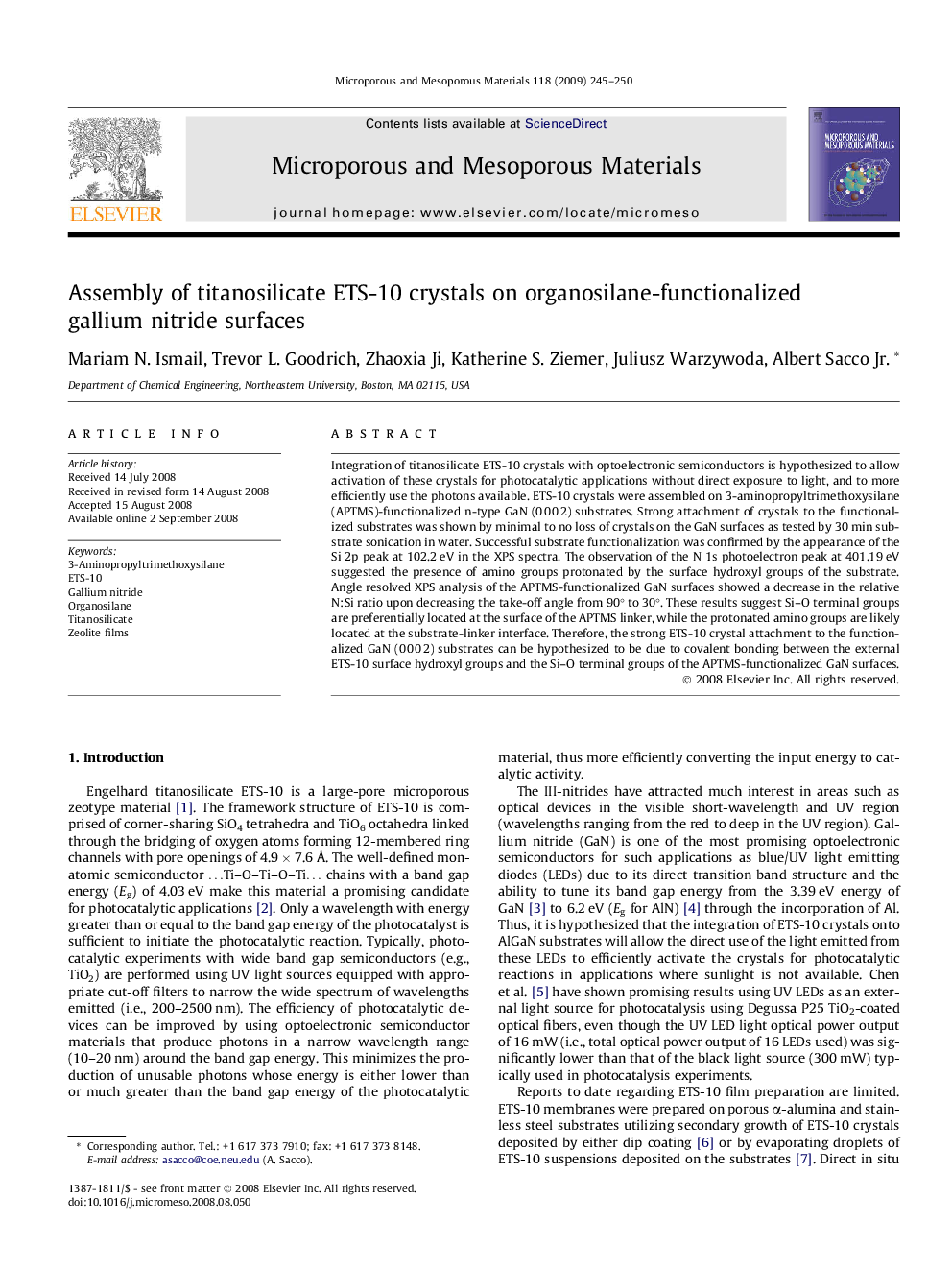| Article ID | Journal | Published Year | Pages | File Type |
|---|---|---|---|---|
| 75061 | Microporous and Mesoporous Materials | 2009 | 6 Pages |
Integration of titanosilicate ETS-10 crystals with optoelectronic semiconductors is hypothesized to allow activation of these crystals for photocatalytic applications without direct exposure to light, and to more efficiently use the photons available. ETS-10 crystals were assembled on 3-aminopropyltrimethoxysilane (APTMS)-functionalized n-type GaN (0 0 0 2) substrates. Strong attachment of crystals to the functionalized substrates was shown by minimal to no loss of crystals on the GaN surfaces as tested by 30 min substrate sonication in water. Successful substrate functionalization was confirmed by the appearance of the Si 2p peak at 102.2 eV in the XPS spectra. The observation of the N 1s photoelectron peak at 401.19 eV suggested the presence of amino groups protonated by the surface hydroxyl groups of the substrate. Angle resolved XPS analysis of the APTMS-functionalized GaN surfaces showed a decrease in the relative N:Si ratio upon decreasing the take-off angle from 90° to 30°. These results suggest Si–O terminal groups are preferentially located at the surface of the APTMS linker, while the protonated amino groups are likely located at the substrate-linker interface. Therefore, the strong ETS-10 crystal attachment to the functionalized GaN (0 0 0 2) substrates can be hypothesized to be due to covalent bonding between the external ETS-10 surface hydroxyl groups and the Si–O terminal groups of the APTMS-functionalized GaN surfaces.
